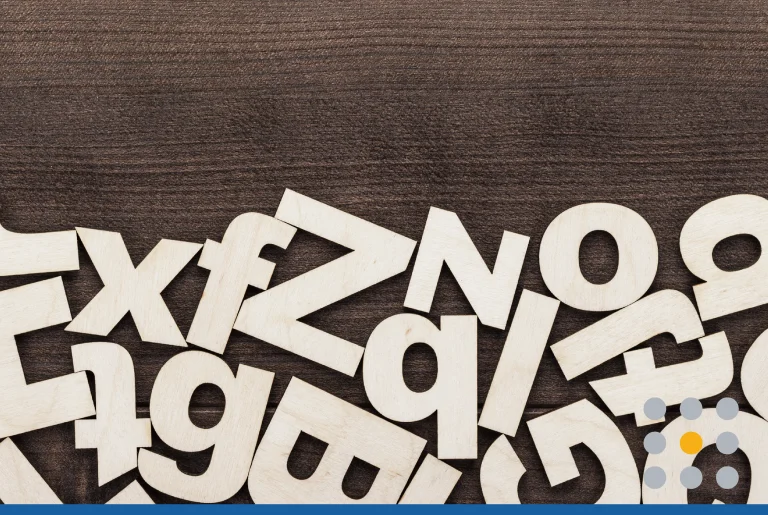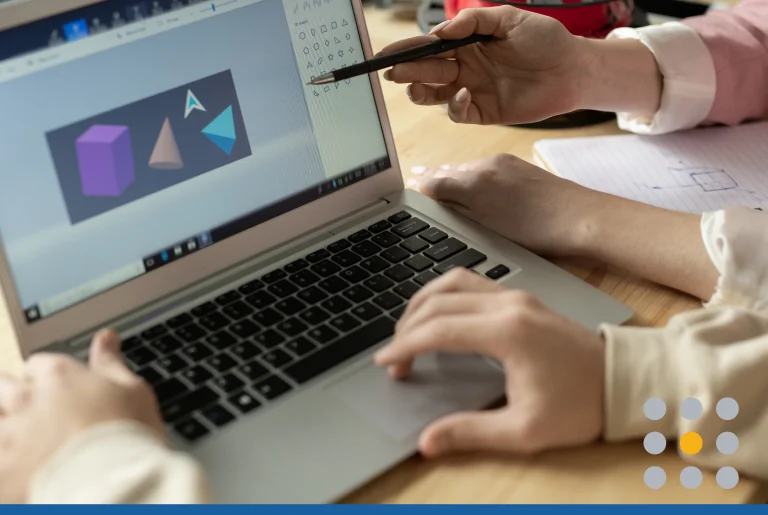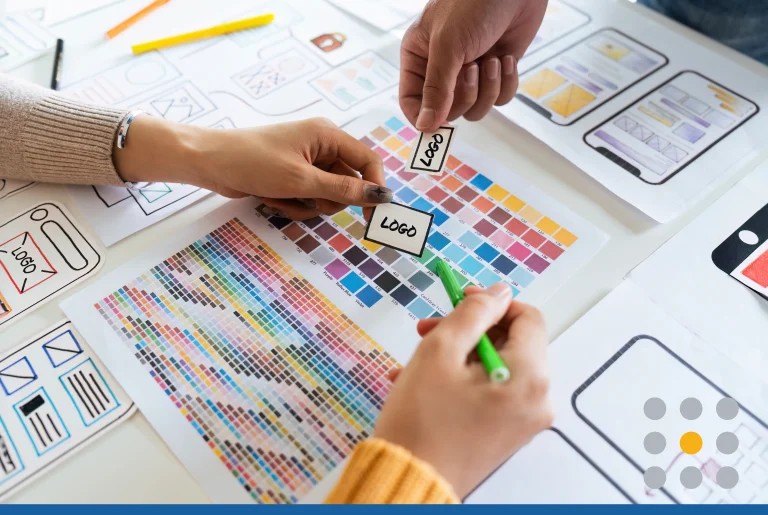If you believe a powerful brand logo can boost your business, you thought right. According to Siegel + Gale, notable logos are 13 percent more likely to attract attention from customers. And they’re 7 percent more likely to motivate customers to learn more about a business.
But it takes more than a few words and symbols to get people interested in your business. A good logo embodies the best traits of your brand, sending a positive message to customers. Logos are on all your business materials, so they have to be well thought out and tell a compelling story. If you want to stand out, learn how to make a logo that gets an emotional response from your customers.
Designing The Perfect Business Logo
1) Choose tools to make a logo
Face the facts. There’s a million ways a logo design can go wrong, and it takes patient trial and error to get it right. Let’s say you pick some stock clipart and a simple font. Easy, right? Too bad, your customers won’t care about a logo that says nothing about your business values.
Think about the one-of-a-kind Starbucks siren or Disney’s signature font. Let your logo show customers what’s unique about your brand.
You have professional and free options to make a logo.
- Graphic design firms: Agencies are pros at studying a brand and choosing the right colors and shapes to represent it. You can trust most agencies to create a good design, but they’re the most costly option.
- Independent designers: Most freelancers are less expensive than agencies, but their skills vary. Make sure you check references and portfolios to find a good fit.
- Design programs: Free or paid software is useful for a DIY project. If you want to make a logo in Photoshop or Illustrator, it’s smart to learn basic design principles.
- Logo maker software: A logo maker is great for beginners who want to make a simple custom design. The premade shapes and templates make it easy to test different arrangements.
2) Plan your logo design
A great logo begins with a clear vision of your brand. That’s why you should spend most of your time planning the design, especially if you want to make a logo for free. A strong concept will provide guidance, so you can spot elements that don’t fit. A calligraphy font probably isn’t the best choice for a plumbing business. And a conservative logo doesn’t make sense for a fun, trendy furniture company.
To get some inspiration flowing, ask these key questions.
- What are the core values and benefits of your business? Think about the most interesting keywords or images you associate with your business. Are you customer-focused? Eco-friendly? Wacky? Traditional? Innovative? Compassionate? Multi-functional? Tied to heritage? Family-oriented?
- What style conventions are common for your industry? Don’t be afraid to get ideas from successful competitors. The goal isn’t to copy, but to spot important style choices used throughout your industry. Keep in mind, it’s okay to stray from the norm if you have an innovative brand or business model.
- What makes you different from competitors? Try highlighting key reasons customers love your business. Are your products user-friendly? Handmade? Cost-effective? Simple and straightforward? Luxurious? One-of-a-kind?
- Where will your logos be used? On printed promotional materials? Product packaging? Business cards? Apps? Vehicles? Billboards? The size and type of media can affect the clarity of your logo. Make sure your logo makes an impact, whether it’s on a huge sign or tiny avatar.
3) Tell a story with text and symbols
Logos have to accomplish a lot with little real estate, but don’t go overboard. A simple design is easy to reproduce and update, and it’s less likely to have unintended meanings. Think of ways to express your brand story through lettering.
Your logo font style should match the tone of your business. Serif fonts, such as Garamond, have decorative lines on the ends of letters. Sans serifs, such as Tahoma, have cleaner, unembellished lines. Businesses often choose serif fonts for an upscale, classic, or conservative look. Sans serifs are a better option for trendy, modern and futuristic logos.
In reality, your have unlimited options. Many companies choose fancy script or design completely unique fonts. Imagine Coca-Cola’s one-of-a-kind lettering. If you’re planning to make a logo in Illustrator, try creating your own font to set your brand apart. Whatever font you choose, play around with size, capitalization, and line weight for a custom look.
Choose your symbols wisely. It’s fine to only have text in your logo, but strong symbols can make your brand bold and recognizable. Brainstorm images that match your brand name or business model. A sleek, leaping jaguar was an obvious choice for the world-famous auto company. And who can envision McDonald’s without the legendary golden arches?
Consider how to use a common animal, shape, or emblem in a new way. Apple transformed a basic object by depicting it with a missing bite, or “byte.” The logo fits the brand and differentiates the company from the rest of the industry. In short, make sure your symbol has a “wow” factor.” A logo won’t make a statement if it doesn’t distinguish your business.
4) Create a color story
People have strong gut reactions to color, so be sure to convey the right message. When choosing your logo colors, think about the luxurious and mystical air of purple. Blues are often soothing, while yellows are fun and cheerful. Reds and oranges create feelings of warmth, passion, and excitement. Greens and browns come across as earthy, and neutrals range from peaceful to elegant.
Color should be the last step in the design process. Logos often appear in black and white, so it’s wise to create a design that works without color. Ever seen the hidden arrow in the FedEx logo? The design has impact without the purple and orange color scheme.
The most important thing is to choose colors that match the story you want to tell. Experiment with levels of brightness and saturation, and take advantage of negative space. Think about how the NBC logo uses whitespace to form the peacock’s body. Too many bright colors can sometimes be overpowering, so aim for balance. Using a gradient can emphasize key parts of the design, much like the Soundcloud logo.
5) Save your logo files
An awesome logo design goes to waste when you use the wrong image files. The design has to stay clear and attractive, whether you enlarge or shrink it. Vector files are versatile digital images. They use complex mathematical formulas to preserve dimensions and clarity at any size. Another common option is raster bitmap files. They are made of tiny pixels in a grid, and the images can be distorted when scaled.
Raster files work well when you’re using an image at or near its original size. This includes common file formats, such as .jpg and .gif. The images get muddier and lose crisp color the more you change their size. Vectors are more flexible, as you can print them in any size on clothing, business cards, letterhead, and more. Common file formats include .ai and .eps.
Final Thoughts on Logo Design
When it comes to logos, your first idea is usually the worst one. Chances are, you’ll choose words and symbols that are already overused. With that in mind, take your time, and get feedback from people who value your brand.
Others can help you brainstorm unique ideas and weed out bad designs. Once you decide the essential elements of your design, keep trying new arrangements. Many brands create clever designs by not overthinking the overall appearance and final look of their logo.
For some new ideas, browse through a few of our logo design templates. One of them may spark creativity!







